Amateur beekeepers argue that the content of bees in multicompute hives can significantly simplify care. In addition, there is an expansion of the nests with whole buildings, and not separate frames. It is also worth paying attention to the fact that the beekeeper is able to serve much more bee families if they are contained in multicompute hives, and not in the hives of other systems.
And if you take into account the formation of bees, which occurs at a timely expansion of the bees's nests in multicompute hives, then such a system allows you to contain two modules in one hive. When the period of the main bribe comes, in the multi-circuable hive, both uterus reproduce a huge number of young flight bees - it is somewhat that this is several times the collection of honey. With this content of bees, it is possible to change the uterus annually - working bees will not make a lot of effort to find the old uterus in the family. If the expansion of nest nests, then the care of bees is simplified, which increases productivity at the apiary.
How to translate bees in multicompute hives
Multiculate hives will allow you to rebuild a large number of framework frames, as well as maintain the working energy of bees and warn if it is necessary, a root state - all this significantly increases the productivity of families. But since it is necessary to make a bee challenge only after a transition to a multi-level system is happening, this means that you will need to translate first bees in multi-circuable hives.
- The best time of year to relocate the bees in a multi-door hive is spring, more precisely, its first half. The reason is that at this time of the year in the hive, a few frames and breakdown occupies a small cell area. If you are late with time, the breakdown can accommodate all honeycombs. Shuffling it, you can kill a lot of young, which will bring to the weakening of the family.
- Most of the resettlement bees occupies a parsing of the nest.
- So that young people do not get sick, the whole procedure must be carried out when the street is warm and there is no big wind.
- Immediately before the transfer of bees in multicompute hives, it is necessary to cut the frames, since the sizes of the frames in two-circuit or twelve-graded hives are 435x300 mm, while the size of the multi-circuable hive frame is 435x230 mm.
- The height of all frames should not exceed 230 cm.
- Side strips of each frame must be trimmed by a secateur up to 230 mm, and then crop down the lower part of the honeycomb and navigate the bar to the side straps, as well as constant separators.
- The hive itself must be cleaned and disinfected, only after that put to the place where the beehive was previously stood from which the bees move.
- In the prepared hive, it is necessary to put a shortened framework together with breakdown, perga and honey. The breakdown should be in the center, and honey and perga - along the edges.
- Fucking a set, it is necessary to put on it immediately ten frames.
- After the work performed in the new hive is transferred and bees.
- Be sure to make sure that there are uterus in the honeycomb and she fell into a new hive. By the way, at the time of transplanting bees, the uterus is best covered on top of a cap.
- As soon as the bees found themselves in a new dwelling, on top of the frame it is necessary to put the canvas or ceiling planks, and to put the hodgepick on the housing, it will be necessary to post the insulated pillow there, and only then cover the roof from above.
- Depending on the strength of each particular bee family, the tray must be reduced to one or three centimeters.
Second, third, fourth floor
In summer, a lot of nectar and pollen bring bees in good weather, and the uterus, in turn, is postponing more and more eggs. Since the daily family increases, then the square it is expanding. As soon as the bees cover all the ten frames, you can put the second building - it will save from the delay in the development of the family.
The second case will need to pre-prepare.
- Equipping the housing from small honeycombs of light brown color and add a couple of frames with a female.
- If there is no minimum honeycomb, then in the body it is necessary to pour from five to eight kilograms of sugar syrup (at a concentration of 1: 1).
- It should not put light honeycombs in the second building, where the breakdown has not yet been displayed will reluctantly put eggs here.
As soon as the uterus fills the lower case with eggs, it will definitely begin to look for a new place for masonry, so the second case will be for it by the way. Together with her, part of the bees will go.
When the bees fill the "second floor" with a breakdown, perga and honey, the uterus will slightly reduce the pace of the egg laying. Do not immediately put the third body! It is necessary to lower the second case down, and on top to put the first case.
The third body is put in order to prevent a root state and to build the strength of the family. In the third case, it is necessary to place a framework framework, which is movable. You can deliver the third body between the first and second. Thus, the breakdown is taking place and the bee will make a maximum of effort to restore the nest, so there is no turning condition.
The fourth case is installed on average a month after the third decree occurred. During this time, the bees must fully restore the destroyed nest. The installation of the housings occurs as follows: from the bottom up - the third case (uterus + open decoder), the first housing (printed breakdown), the fourth case (new, but prepared as described above), the second case (printed breakdown + released cells from the breakdown).
Thanks to such a castling, the open breakdown will be located at the bottom, and at the top - almost empty cells (in front of the printed). It will also make it well prepared for wintering.
One-time expansion of the nest
In the spring, the bees must be kept in one case until the breakdown takes at least nine frames - this happens at about a while when the gardens bloom. To organize early glasses of bees, as can be seen in the video, it is necessary to prepare first: first of all, either to withdraw the dies from those families that work most productively, or simply get a certain amount of mature queen in families or buy new modules in the nursery.
Do not proceed to expand the nests if you have not yet prepared a hive: in an empty case, it is necessary to place about 6-7 frames (small) and 3-4 cells (empty). If there is no minced frame, you can replace with sugar syrup (about five to eight kilograms per seven). After preparation, you can proceed to the formation of the bee groove.
Creation of beekens
- The plywood bottom is naked to the clean and absolutely disbelievable body.
- We are transferred to the body from the nest two or three frames with a breakdown - with a multi-year, both still printed and already seated bees on honeycombs.
- To strengthen the grooves, you can with two or three frames "to join" bees.
- Watch that the uterus remains in the housing with the main family, where six to eight frames are also located together with the breakdown, bees (half), two or three empty honeycombs (or small).
- In a new building (with a deaf bottom of plywood), put 9Dve-three frames together with a breakdown, seven or eight hots with syrup and perga or small.
- Eight hours after the above-described actions in the body, a printed mature royaltic or a young uterus is planted.
- Where the old uterus remained, you need to put the feed body - he has a closed pilot. On top of the structure, it is necessary to put the housing, which has a deaf plywood bottom (inside in it formed a molding).
- Place the housing is necessary so that the letters are addressed in different directions.
- The jack with a tank must be insulated with a pillow from above.
Care for bees
Waste bees, as shown in video, do not require some special care. During the organization, the family has a loss of a breakdown and working bees. At the same time, the nest increases, since the feed case is installed. But it is also worth considering the fact that many bees will return to the main family and the chain can noticeably relax. That is why it is not necessary to bother not a family - the basis, nor a new family - a grain. Let families grow and gain strength, besides, the grain should take the uterus that is capable of laying eggs.
About a month after you have formed a gauge, you will need to start expanding the nests - both grain and the main family.
- The housing of the hive is disinfected.
- Puts five frames with honeycomb and five with the fear - they should alternate among themselves.
- The uterus from the main family will go into the second building, so they need to be swapped (the first body to put up, and the second is down). Between them, you can put the third body - after placing the honeycomb and the massacre.
- If by this time the chain began to fully occupy his body, then the nest can be expanded - to put an additional case in which the cell and the massacre is pre-placed - no more than two or three frames.

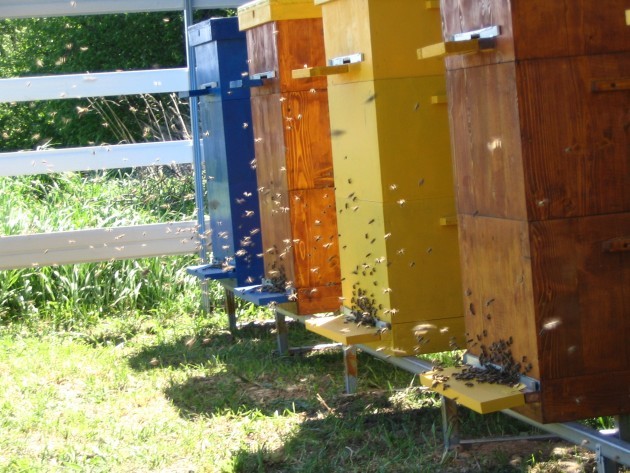
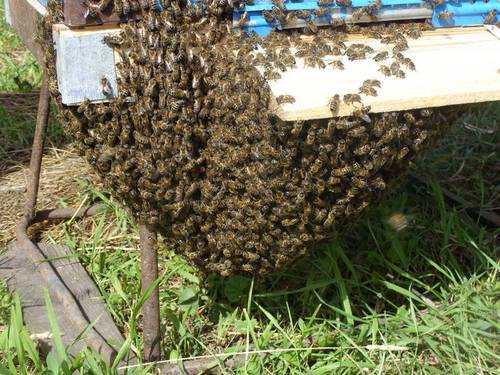
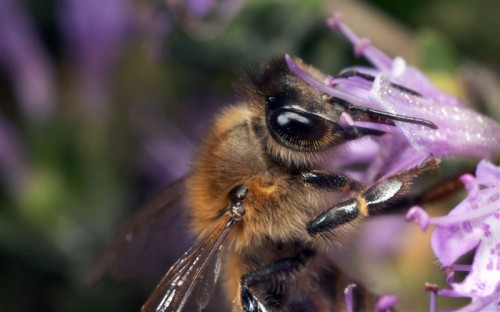
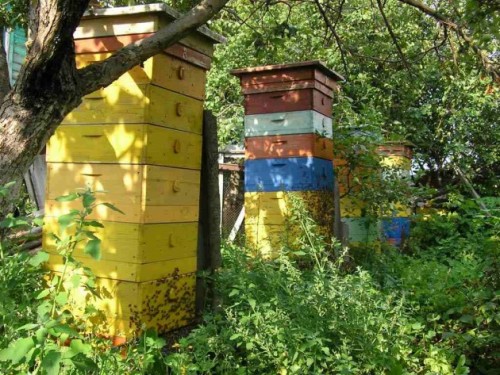
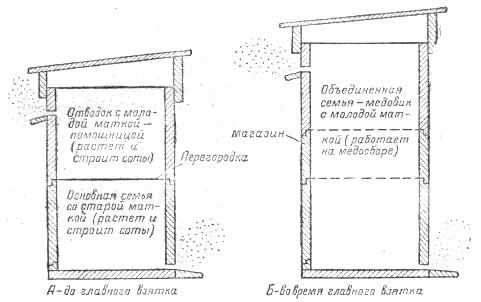
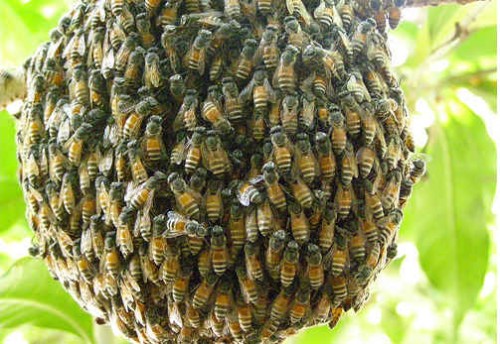
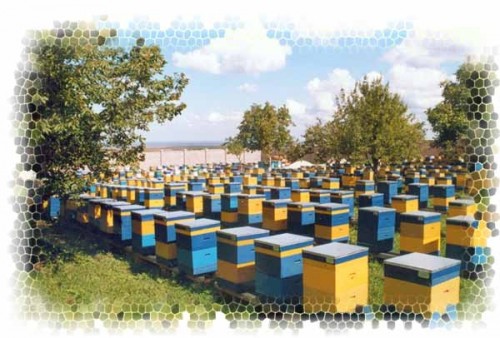
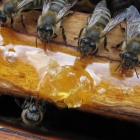
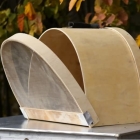
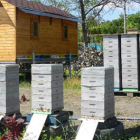
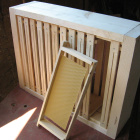
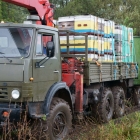
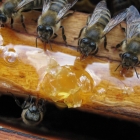
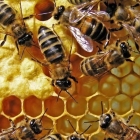
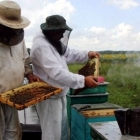
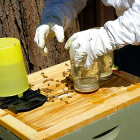
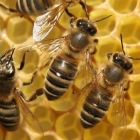
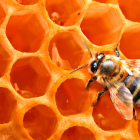
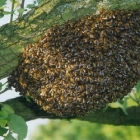
 Start a discussion ...
Start a discussion ...